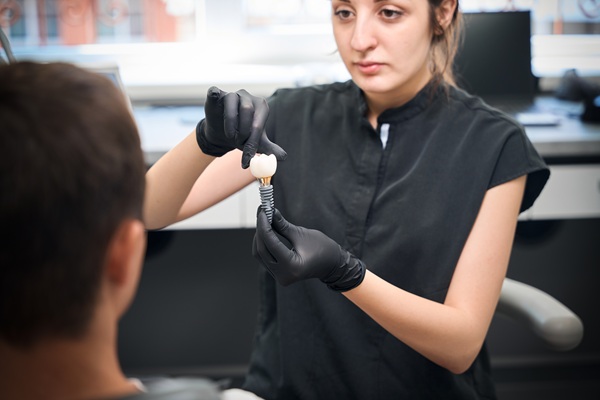You May Need Tooth Extractions if You Have Advanced Periodontal Disease
 If you have gum disease, tooth extractions may be in your future. Your gums can become infected when bacteria get in between your gums and your teeth. The bacteria can start to irritate and attack your gums. As a result, they may become swollen, painful and start to bleed. This early stage is referred to as gingivitis and can typically be treated by simply removing the bacteria and performing a deep cleaning. If you have your teeth cleaned twice a year, this is easy to catch and treat before it spreads.
If you have gum disease, tooth extractions may be in your future. Your gums can become infected when bacteria get in between your gums and your teeth. The bacteria can start to irritate and attack your gums. As a result, they may become swollen, painful and start to bleed. This early stage is referred to as gingivitis and can typically be treated by simply removing the bacteria and performing a deep cleaning. If you have your teeth cleaned twice a year, this is easy to catch and treat before it spreads.
When gum disease grows, the damage becomes far more severe. It can cause your gums to start to recede and pockets to be created in your gum tissue. These pockets look like small holes and can expose the structure of your tooth and even your roots. This is problematic for several reasons. The exposed area can be sensitive to air and food, which will be painful. Bacteria can gather in these pockets and start to attack your tooth and roots. If the infection spreads from the gums and into your bone structure, your teeth and jawbone can become weaker.
When your teeth and jaw become infected or bone loss occurs, it creates a situation where your teeth may fall out. In this level of advanced periodontal disease, many patients need to schedule tooth extractions. If you have reached the point where your teeth are going to fall out, it can be better to have them professionally removed so that it is clean, and your risk of infection is reduced. We never want it to reach this point and provide preventative care in order to avoid it. The problem is that when people don't see a dentist on a regular basis there is no way for us to prevent, detect or treat the disease. This makes it extremely important to keep regularly scheduled dental appointments.
When it is time to remove your tooth, the dentist will numb the area. Your tooth, jawbone, and gums will become numb by using a local anesthetic. Next we will wiggle the tooth back and forth in order to create more room for it to be removed. You may feel pressure during this time but shouldn't feel any pain.
In cases of severe periodontal disease, the tooth is typically already loose, making it easy to pull it out. At times, as with wisdom teeth, the tooth cannot be pulled outright and must be sectioned first. This is where we cut the tooth into several sections and remove one at a time because the roots are holding on too tightly to allow us to remove it in one piece.
When your tooth extractions are over the blood must clot before we can do anything else. We do this using gauze for around forty-five minutes. For the next couple of days, you need to take it easy and watch what you eat along with your activity levels. We will provide specific care instructions after the procedure, and it is important to follow them.
If you are concerned about the health of your teeth or gums, give us a call.
General Dentist > Family DentistRecent Posts
Periodontal disease is the latter stage of gum disease. It is often the result of failing to get the necessary treatments during the early stages of this oral condition.The first stage of gum disease is called gingivitis, and it is completely reversible. Gingivitis can actually be reversed without a visit to the dentist. If caught…
We provide periodontics care in Glendale that can both prevent and treat gum disease. While we treat patients of all ages and in all stages of health, pregnant women have a particularly unique reason to visit our office – the health of their unborn baby. If you are pregnant and unclear of the connection, we…
Modern dentistry is improving with new technology that enhances patient comfort, convenience, and results. One of the most notable innovations is CEREC. A CEREC dentist provides same-day dental restorations with great precision and efficiency. Choosing this dental provider can change your treatment experience by making it quicker, more reliable, and more comfortable. Here are five…
If you have a missing tooth you would like to replace, you need to learn more about getting a dental implant. Dental implants can improve your smile. They can also prevent many of the problems associated with missing teeth. Implants are one of the most popular options for replacing teeth. If you are thinking about…
 If you have gum disease,
If you have gum disease, 
